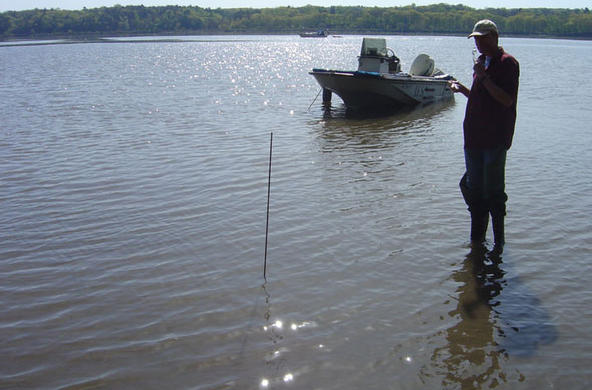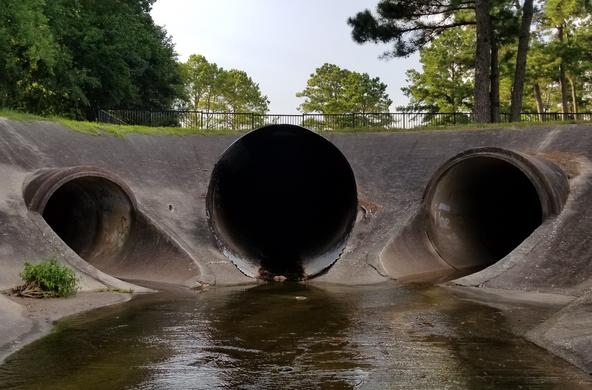This past winter, the National Science Foundation renewed funding for the Institute’s long-term research on how the Hudson River is responding to zebra mussels. Introduced in 1991, the invasive bivalves are now the most abundant animals in the river. Institute scientists have generated the longest published record of this invasive species. Thus far, their findings have revealed valuable insight into how zebra mussels have altered both river habitat and the aquatic food web.
As a result of Institute research, the Hudson River is one of the most scientifically scrutinized water bodies in the world. Renewed funding will help support the continued monitoring of the river for the next five years. Recently, I sat down with freshwater ecologist Dr. David L. Strayer, one of the project’s lead investigators, to discuss the evolution of zebra mussel research at IES.
How long has the Institute been researching the Hudson River?
The first IES studies began in 1986, when the Institute secured several Hudson River Foundation grants to research the river’s lower food web. Drs. Nina F. Caraco, Jonathan J. Cole, Stuart E. G. Findlay and Michael L. Pace spent three years investigating the river’s nutrient cycles, aquatic plants, bacterial communities and water chemistry. Three years after they began the project, zebra mussels were detected in New York. Thankfully, by this time Nina had developed a model of the river’s phytoplankton communities.
What made her model so important?
Phytoplankton are tiny microscopic plants that form the base of the freshwater food chain. They're also a dietary staple for zebra mussels. By looking at where phytoplankton were abundant, Nina’s model helped determine where and how an invasion might impact the river.
When did you become involved?
By 1989, data indicated that zebra mussels were likely to spread to the Hudson, with potentially large ecosystem effects. Nina, Jon, Stuart, and Mike had good information on the lower food web. To have a first-rate invasion study, they needed insight into sediment- dwelling animals in general and zebra mussel populations specifically. I came on board in 1990 to provide this insight. Focused pre-invasion research is rare; ecologists typically only get to react to an existing invasion. Because zebra mussels hit the Great Lakes first, we were able to think ahead.
Were invasion predictions on target?
We expected zebra mussels to invade in the mid 1990’s; they arrived in 1991. In many ways, we’re lucky they turned up ahead of schedule and in large numbers. Had the invasion happened years down that road, we might not have been able to keep the funding going. Due to the dramatic influx of animals, the project was both fundable and an excellent research opportunity.
What was the most obvious initial effect?
In September of 1992, unable to keep up with zebra mussel’s appetites, the river’s phytoplankton population crashed. By 1993, between 80-90% of the phytoplankton and small zooplankton in the river were lost. From the onset, we were interested in how the river ecosystem would respond to this profound shift in food resources.
Why is long-term monitoring needed to understand the invasion?
Short-term studies can give misleading or incomplete assessments. In some ecosystems, an invader's impact changes over time due to what ecologists call accommodations and interactions. For instance, accommodation can occur when the species in an ecosystem shift to those that are tolerant of the invader. Prior to the zebra mussel invasion, algal blooms were common in Lake Erie. Post-invasion, they all but disappeared. Recently, Microcystis algal blooms have been documented. This species is unpalatable to zebra mussels. The situation is reminiscent of how deer alter forests— the appetite of the invader dictates what survives.
What about interactions?
Think about how tomatoes grow in a garden. Variable weather conditions, such as rain or temperature, influence the quality and quantity of fruit. In the same way, zebra mussel populations may respond differently to chang- ing environmental variables. These trends can take decades to notice.
Why are long-term studies rare?
It’s difficult to get funding for long-term monitoring projects. This is unfortunate because the data gleaned from long-term research are essential to shorter-term studies. Also, trends identified through long-term monitoring can drive research efforts. For instance, we have the longest published native mussel record. Our recent surveys indicate that, after over a decade of declining, certain species may be recovering. This is an interesting trend, but one that would have gone unnoticed in the absence of long-term monitoring.
What are some of the variables currently measured?
They range from plankton populations and water chemistry to native shellfish. How we sample is just as important as what we sample. While weekly measurements are centered on several specific sites, every few months the entire reach of the river from Albany to West Point is surveyed. This gives us a much larger context for understanding the invasion.
How abundant are zebra mussels in the Hudson River?
They outweigh all of the other animals in the river. If you took a balance scale and put the zebra mussel population on one side and all the other river animals on the other, the mus- sels would be heavier.
What keeps them from filling the river?
They are not good at rationing their food! Zebra mussels have a population cycle that looks like a zigzag. Every few years, the population peaks, only to crash. When too many adults survive, they consume food resources to the detriment of their young. The young don’t get to eat, they don’t mature into the next generation, and population numbers decrease as adult animals die.
Why do zebra mussels have such a strong ecological impact?
They strip the river of phytoplankton, a valuable aquatic food resource. In the process, they alter light availability. Since the invasion, water clarity in the Hudson is 50% greater. Often, this translates into increased aquatic vegetation near the shoreline. In certain reaches of the Hudson, zebra mussels blanket the river bottom, creating habitat that is inhospitable to native mollusks.
How have native animals responded?
Open water fish that feed on plankton, such as American shad, have declined. Shoreline dwelling fish have thrived. There are concerns about potential avian impacts. Through filter feeding, zebra mussels accumulate contaminants, such as heavy metals and PCBs, in their tissue. In the Great Lakes, waterfowl interrupt their migration to feed on zebra mussels, sometimes spending weeks foraging on the animals. Some people have suggested that populations of Greater and Lesser Scaup, commonly called bluebills, have declined because these birds are picking up contaminants from the zebra mussels that they eat.
What general lesson can be gleaned from the zebra mussel invasion?
Non-resource species can exert strong effects on aquatic ecosystems. Funding focuses on resource species, such as sport fish. In most places, no one is monitoring non-resource species such as zebra mussels or water chestnut. The "catch-22" is that you can’t understand what is regulating resource species without under- standing the key players in the aquatic environment. In the case of the Hudson River, it would be impossible to understand fish populations without taking zebra mussels into consideration.
The Institute’s Hudson River research has been prolific and influential. What do you think has contributed to this?
A number of factors came together at the right time. We had strong pre- and post- invasion data, a rarity in invasion ecology. There were
immediate and dramatic invasion effects, grantors were interested, and perhaps most importantly, the Institute had on-staff expertise with the research flexibility to drive the program. Each of us brought something to the table that strengthened the effort and enabled us to study the river as a system.
What will the team explore during the next five years of funding?
The changing distribution of zebra mussels in the Hudson River hints that long-term response might be very different from short-term response. We know enough to know we need to learn more; we are at the second level of exploration. Are native mussels recovering? Will zebra mussels spread into the river’s soft sediments? Will river species shift to those that are zebra mussel tolerant? These are just a few of the potential accommodations we would like to investigate.





